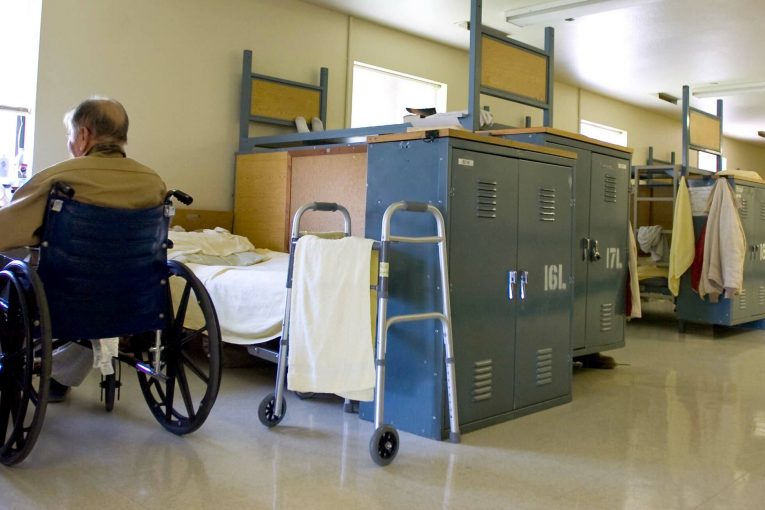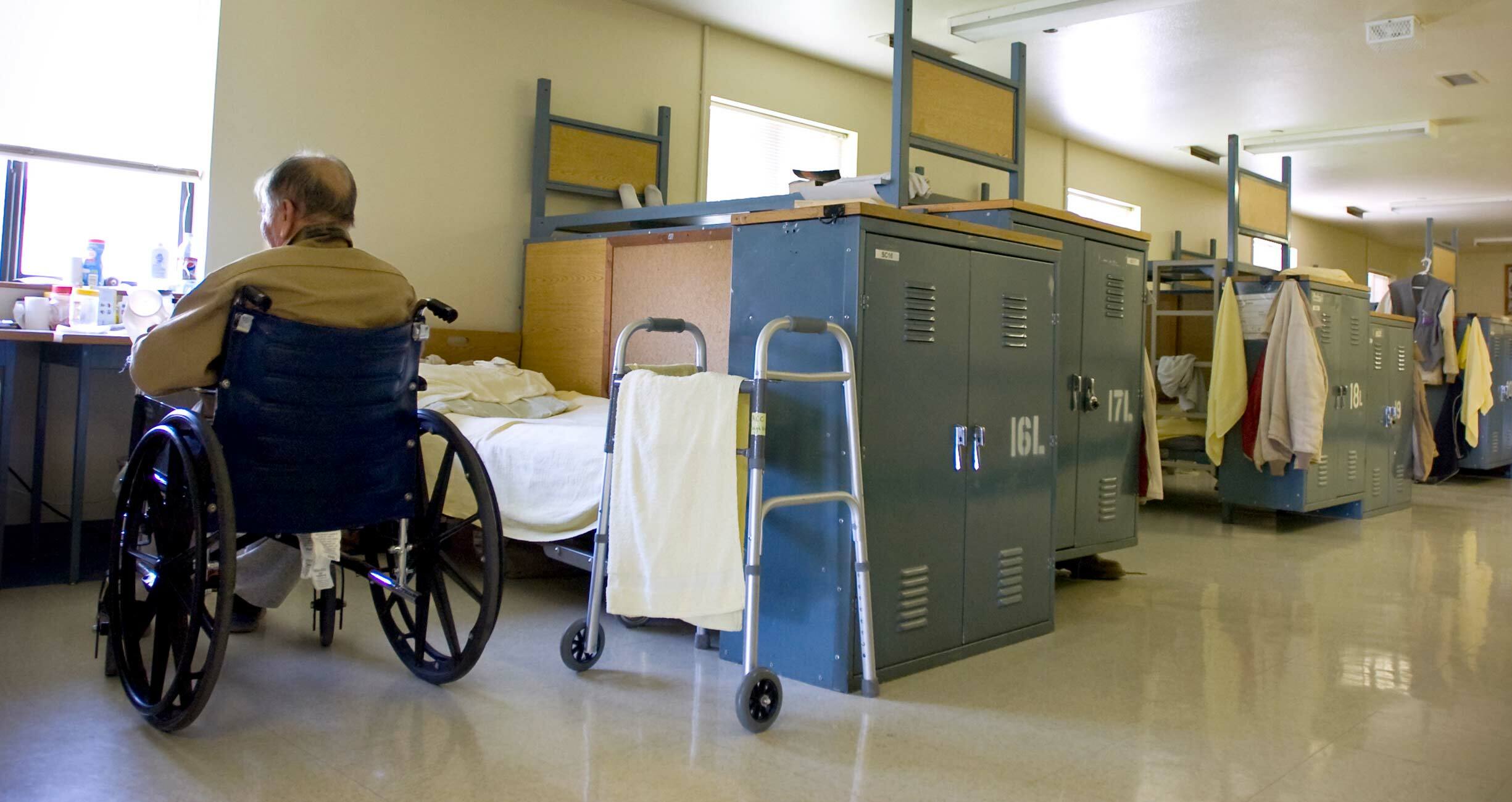
 Incarcerating elderly people does nothing to advance public safety.
Incarcerating elderly people does nothing to advance public safety.
By Marta Nelson and Erica Bryant
At 68 years old, Greg Mingo was granted clemency and released from a New York State prison after being unjustly convicted of a crime he did not commit. After spending more than 39 years in prison, he expected to die there. In freedom, he advocates for the release of other incarcerated older people. “When I left prison a few months ago, I left many amazing people behind,” Mingo writes. “There are so many others like me who have served decades behind bars, transformed their lives, and would be an asset to their families and communities if only they had the same chance I’ve had.”
More older people should be freed from prison. One study found that less than one percent of people older than 65 released on parole from New York State prisons in 2018 returned to prison for a new conviction in the three years following their release. This statistic is but one datapoint among reams of  research showing that people typically “age out” of crime.
research showing that people typically “age out” of crime.
Yet, far too many older people—who pose a miniscule threat to public safety—are being left to age and die in prisons around the United States. Decades of so-called “tough-on-crime” policies mandate excessive sentences for most crimes, driving mass incarceration and devastating communities without any benefit. As a result, prisons across the country are filled with large populations of aging people. In New York alone, nearly one in four incarcerated people is an older adult. In California, the percentage of the prison population over 50 has risen, from about four percent in 1994 to 25 percent in 2019. More people are serving life sentences in the United States today than were serving prison sentences of any kind in the 1970s. In Louisiana, one in six incarcerated people is sentenced to die in prison and the number of incarcerated people aged 60 or older rose by half between 2013 and 2021. As of 2020, nationwide, at least 61,400 older adults were serving life sentences, or sentences exceeding 50 years, making it likely that many of those people will die in prison.
Endless reports document how prisons fail to provide basic health care even for relatively healthy people. They are certainly not equipped to care for a large cohort of aging people with complex and serious health needs exacerbated by the stress of incarceration. From the use of bunkbeds to the lack of accessible bathrooms and living spaces, prisons simply are not designed for people nearing the end of their lives.
Almost no older people paroled from prison commit new crimes
Long prison sentences are sometimes justified by the incorrect assumption that people who have committed violent crimes will repeat this behavior. Numerous studies show that people who are incarcerated for serious crimes, like murder, are highly unlikely to commit similar offenses when paroled. A study of people in Louisiana who were released on parole after serving more than 26 years in prison found a recidivism rate of almost zero, regardless of the type of crime they committed. Return rates to New York prisons decline precipitously as the age at time of release increases.
For people aged 55 and older in New York, in 2022, their parole release rate was higher than almost any other age group. Even so, more older people were denied parole than were released. Too often, people are denied parole because of their original crime, rather than any current threat they present to public safety. New York should not be spending nearly $115,000 or more per year to incarcerate people who are proven to be unlikely to cause harm.
After years, or decades, in prison, many people have transformed their lives—earning degrees, becoming mentors, participating in job trainings, and developing life skills. As New York State Senator Brad Hoylman-Sigal told The Crime Report, they deserve a second chance. Senator Hoylman-Sigal has sponsored a bill to give incarcerated people in New York aged 55 and older a chance for parole. People shouldn’t be judged based on “the worst things they have ever done,” he says. “It’s also really important that we have our elders who were incarcerated back in the communities, sharing their stories and mentoring young people.”
Not only does keeping ailing older people behind bars fail to advance public safety, but it even goes against the wishes of most survivors of crime. A majority of crime survivors prefer that the criminal legal system focus on restoration over punishment, prioritize shorter sentences over long ones, and hold people accountable through alternatives to prison, like substance use and mental health treatment, community service, and restorative justice.
Ending the waste of decades spent behind bars
There is no need for this reality—federal and state governments can implement laws and policies that allow more incarcerated older people to return to their communities.
In 2021, Louisiana passed a law that provides parole eligibility to some elderly people who accepted life sentences in plea agreements based on the understanding that they would be eligible for release after a decade of good behavior. When the state originally rescinded this eligibility in 1972, many people were unjustly imprisoned for half a century. Louisiana can do much more to release elderly people back to their communities.
New York also has an opportunity to rectify these injustices by passing the Elder Parole Act, which is under consideration to allow people aged 55 and older to appear before the state Board of Parole after serving 15 years, no matter their sentence length or crime, and make their case for release. The Fair and Timely Parole Act is also under consideration in New York and would compel the Board of Parole to presume release unless commissioners identify “a current and unreasonable risk the individual will violate the law if released.”
All states can, and should, look to these examples and expand elder parole eligibility. They should also compel their parole boards to focus on a person’s current public safety risk, rather than on the crime they were originally convicted for, which may no longer be relevant in a safety calculation.
Current incarceration practices do not reflect human beings’ great capacity for growth and change. Older incarcerated people have a great deal to offer their communities, and no public safety justification exists for allowing them to die behind bars. Lawmakers have the power to reform parole policies and practices to allow more people to end their lives in freedom. It’s past time they do it.
Originally published by Vera Institute of Justice.
Marta Nelson is Director of Sentencing Reform for Vera Institute of Justice. Erica Bryant is Associate Director of Writing.





